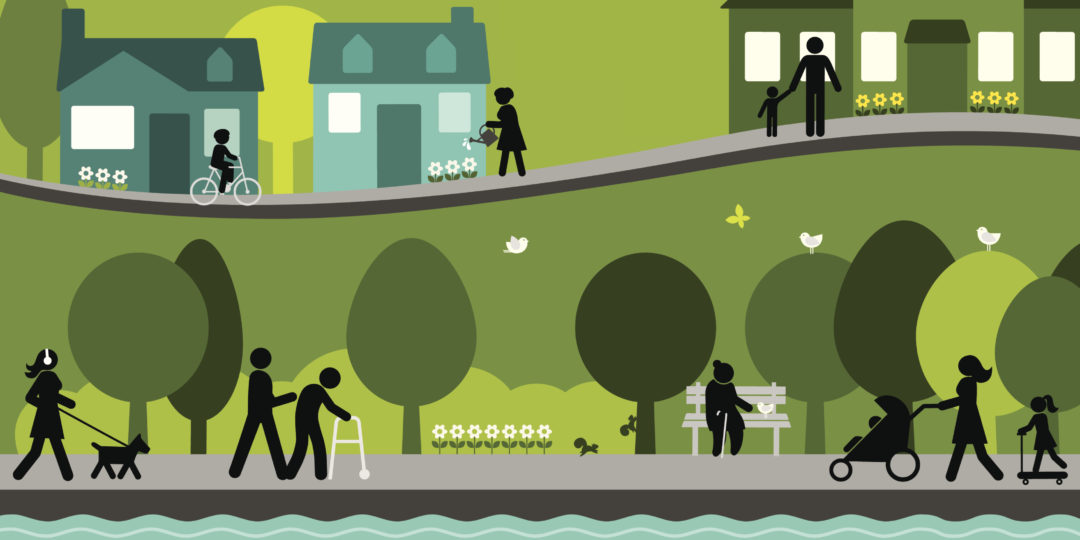In my last blog, I wrote about how applied research is driving economic growth and productivity for businesses looking to solve problems, adopt new technologies and enter new markets. My focus here – in the second of three blogs – is the important role applied research plays when it comes to improving the social and physical well-being of Canadians.
While innovation drives well-being by creating economic benefits like growth and job creation, applied research generates social benefits of a much broader nature. At Canada’s polytechnics, applied research is actively creating the products, processes and techniques that address our most pressing social challenges, including an aging population, the climate emergency and sustainable food production. Further examples can be drawn from the broader healthcare sector, energy extraction, public safety, disaster relief and many other fields. The common element is the development of pragmatic, on-the-ground solutions that are addressing the issues that keep both politicians and concerned Canadians up at night.
For example, the aging population has been referred to as a “silver tsunami,” radically transforming the workforce, shaking up social structures and putting intense pressure on our healthcare system. Applied research is making it easier for seniors to live at home longer, developing assistive devices that prolong independent living and enable home healthcare services. Researchers at Sheridan are working with partners to explore how virtual reality can augment the workforce and deliver better outcomes for residents in long-term care facilities. Eldercare research is also underway at Conestoga, where they are finding ways to improve quality of life for seniors while, at the same time, training a new generation of healthcare professionals. More broadly, at Red River, applied research is harnessing aerospace manufacturing technology in the fight against cancer.
Climate change is another pressing social issue of our time. Despite decades of targets and talk, little has been done to mitigate our environmental impact, figuratively kicking the can down the road for action another day. The impacts of this behaviour are now reverberating through every part of the global economy. As a result, governments and citizens alike are looking for cleaner sources of energy, low-carbon solutions and a more sustainable relationship with the planet.
Canada’s polytechnics are living laboratories for sustainability. Net-zero buildings have reduced the carbon footprint of their institutions and learning programs embed the development of green skills. Unsurprisingly, polytechnics have also become hubs for environmentally focused applied research. For example, in partnership with the City of New Westminster, the British Columbia Institute of Technology leveraged existing streetlight infrastructure for electric vehicle charging stations, serving as a blueprint for other municipalities. At Fanshawe, work with London Hydro is designed to help off-grid energy producers decide when to sell their excess solar power back to the grid. Looking at opportunities to make diesel fuel go further and burn cleaner without sacrificing power, the Southern Alberta Institute of Technology is working with an industry partner on its “hydro-refining” process.
Another great example of applied research as a social good is its ongoing impact on agriculture and the global food supply. Agricultural innovations are fighting the effects of disease, drought and pestilence, while allowing for the production of more food on less land. With the world’s population expected to reach close to 10 billion by 2050, the UN has suggested that agricultural output would have to grow by as much as 70 per cent to ensure nobody goes hungry.
Canada’s polytechnics are on the case. Saskatchewan Polytechnic is working with producers to develop and integrate unmanned aerial vehicles into agricultural practices, contributing to bigger crop yields with fewer human interventions. These same drones are now used by conservation officers to record and analyse crime scenes. Meanwhile, researchers at Kwantlen Polytechnic University are turning fungi into natural pesticides and applying DNA sequencing technology to seeds, providing opportunities for students and local farmers alike to access teaching and research farms just minutes from downtown Vancouver. As the world’s population becomes increasingly concentrated in cities, urban farming will be an important element in producing the global food supply.
Canada’s polytechnics are innovation intermediaries that are truly driving social development with pragmatic and scalable solutions that actively improve upon life in Canada. To learn more about the social innovation projects and how they contribute to a better Canada, read Polytechnic Applied Research: Building a Stronger Canada.

